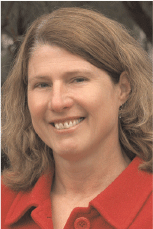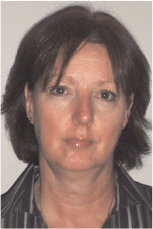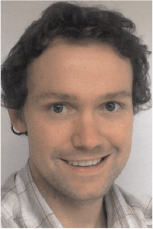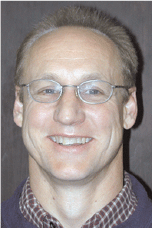Structural architecture and basin evaluation of the North West Shelf
Lynn Pryer A , Jane Blevin A , Gabriel Nelson A , Guillaume Sanchez A , Jen-Deng Lee A , Donna Cathro A , Rod Graham B and Brian Horn BA FROGTECH Pty Ltd.
B ION GeoVentures.
The APPEA Journal 54(2) 474-474 https://doi.org/10.1071/AJ13047
Published: 2014
Abstract
The WestraliaSPAN 2D regional program extends across all basins of Australia’s North West Shelf (Carnarvon/Roebuck/Browse/Bonaparte basins) and Arafura regions. The survey is designed with long offset and record length (18 sec) acquisition parameters to image the important deep crustal and sub-crustal architecture and depositional systems across this complex margin. The regional program provides unique, state-of-the-art depth imaging of deep-basement rift structures of the Westralian Superbasin, as well as the lower crust and Moho. The survey has multiple transects which cross the transition from continental to oceanic crust that provides insight into the distribution of volcanics and a possible hyper-extended rift margin. An integrated geological and geophysical interpretation encompasses available well, seismic and potential field data. Gravity models were developed to aid in-depth conversion and the structural interpretation of the deep crust and Moho. A comprehensive model of basin formation provides the context for regional correlation of tectonostratigraphic packages throughout these linked basin systems, highlighting pre-Jurassic rift basins and their structural controls. While the North West Shelf, Browse and Bonaparte basins are proven and established hydrocarbon provinces, a future step-change in exploration concepts involves an integrated, margin-scale understanding of these basin systems and their potential resources. Collectively, the new dataset and interpretation will aid explorers in understanding the nature and distribution of key petroleum systems elements (reservoir/source/seal) and processes (heatflow, timing of source maturity, expulsion, migration and entrapment).

Lynn Pryer is presently a principal geologist with FROGTECH, joining in 1996 when the company was Etheridge Henley Williams Geoscience Consultants (and later part of SRK Consulting). She holds a BSc and an MSc from McMaster University (Ontario, Canada) and a PhD in structural geology from the University of Toronto (Canada, 1993). Lynn worked at the Ontario Geological Survey and Geological Survey of Canada while completing her studies. In Australia, she completed a NSERC (Natural Science and Engineering Research Council of Canada)-funded Postdoctoral Fellowship at the Research School of Earth Sciences at the ANU (Australian National University) in experimental rock deformation. |

Jane Blevin is CEO of FROGTECH Ptd Ltd and has 25 years’ experience in basin studies and petroleum geology. Jane has worked in basins across Australia, the North Atlantic, Oman, Africa, China, Brazil, North America, PNG and New Zealand. Before joining FROGTECH in 2006, Jane worked for 15 years as a principal research scientist and project leader at Geoscience Australia, where she undertook basin and petroleum prospectivity studies of basins around Australia. Jane holds a BS and an MS in Geology from SFA State University and moved to Australia in 1985 to complete PhD studies at James Cook University. Jane is past-president of the PESA ACT Branch. |

Gabriel Nelson obtained his MS at Acadia University in 2008, where he focussed on sequence stratigraphic and depositional facies models of Paleoproterozoic phosphorites. Gabriel worked with subsidiaries of Rio Tinto and Exxon Mobil, as well as Geoscience Australia before joining FROGTECH in 2012. His professional resource assessment and basin analysis experience over the last 7 years includes investigations of Precambrian to Recent basins across Australia and North America. Membership PESA and GSA (Geologic Society of America). |

Guillaume Sanchez joined FROGTECH as a geoscientist in 2012 after obtaining his PhD in 2010 and working a year as a researcher and lecturer assistant at the University of Nice-Sophia Antipolis in France. His main research focuses on crustal-scale deformation, in both collisional and extensional settings with a particular emphasis on the influence of basement structure on basin architecture and on the style of the deformation during tectonic inversion. In addition, Guillaume is involved in integrated petroleum exploration studies combining geological and geophysical interpretations based on potential field data and calibration datasets (seismic, wells and surface geology). |

Jen-Deng Lee graduated from the Australian National University in 2011 with a BSc (Hons) Geology double major focussing on seismic interpretation of the post-Valanginian stratigraphy of the offshore northern Perth Basin. He joined FROGTECH immediately after finishing his Honors in 2011 as a geological research officer. Prior to that, he worked as a production geologist intern at Brunei Shell Petroleum Co from Dec 2010 to Jan 2011, working on volumetric estimations of reservoir attic oils. |

Donna Cathro obtained a BSc (Hons) from Adelaide University and the then National Centre for Petroleum Geology and Geophysics, before commencing work with AMDEL Core Services. She joined AGSO (now Geoscience Australia) as a seismic data processor in 1992, later moving into the interpretation groups. While at GA, Donna pursued a PhD from The University of Texas, and finished in 2002. Donna joined FROGTECH in 2005 and is presently senior geologist. In her various roles, Donna has worked on a variety of projects, ranging from thin-section analysis on individual wells to regional seismic stratigraphic analysis and multi-basin studies, covering entire continents. |

After obtaining a PhD in Precambrian Basement Geology, Rod Graham became a lecturer in Structural Geology in the University of Wales, but later joined the oil industry, and in number of consultancy and managerial roles in structural geology and new ventures. Having worked for several different companies, he retired from Hess two years ago and is now an independent consultant. |

Brian W. Horn is the director of geology and chief geologist for ION Geophysical GeoVentures Business Unit. He has worked in exploration and production for 20 years with Amoco, BP and Maersk Oil, before joining ION in 2010. His experience includes integrating geological and engineering/production data for play fairway analysis, petroleum systems and source-rock potential, regional stratigraphic and seismic correlations, resource assessments and delivering exploitation/development programs for development (infill) drilling. Brian received his Bachelors and Masters in geology from the University of Colorado and his PhD in geology and geological engineering from the Colorado School of Mines, Golden, CO. |
References
Colwell, J.B., and Kennard, B., 2001—Line Drawings of AGSO-Geoscience Australia’s Regional Seismic Profiles, Offshore Northern and Northwestern Australia. Dataset. Record 2001/36. Canberra: Geoscience Australia Publication.Reston, T.J., Leythaeuser, T., Booth-Rea, G., Sawyer, D., Klaeschen, D., and Long, C., 2007—Movement along low-angle normal fault: The S reflector west of Spain. Geochemistry Geophysics Geosystems, 8 (6), Q06002, d.
Stagg, H.M.J., Alcock, M.B., Bernardel, G., Moore, A.M.G., Symonds, P.A., and Exon, N.F., 2004—Geological framework of the outer Exmouth Plateau and adjacent ocean basins. Canberra: Geoscience Australia.


